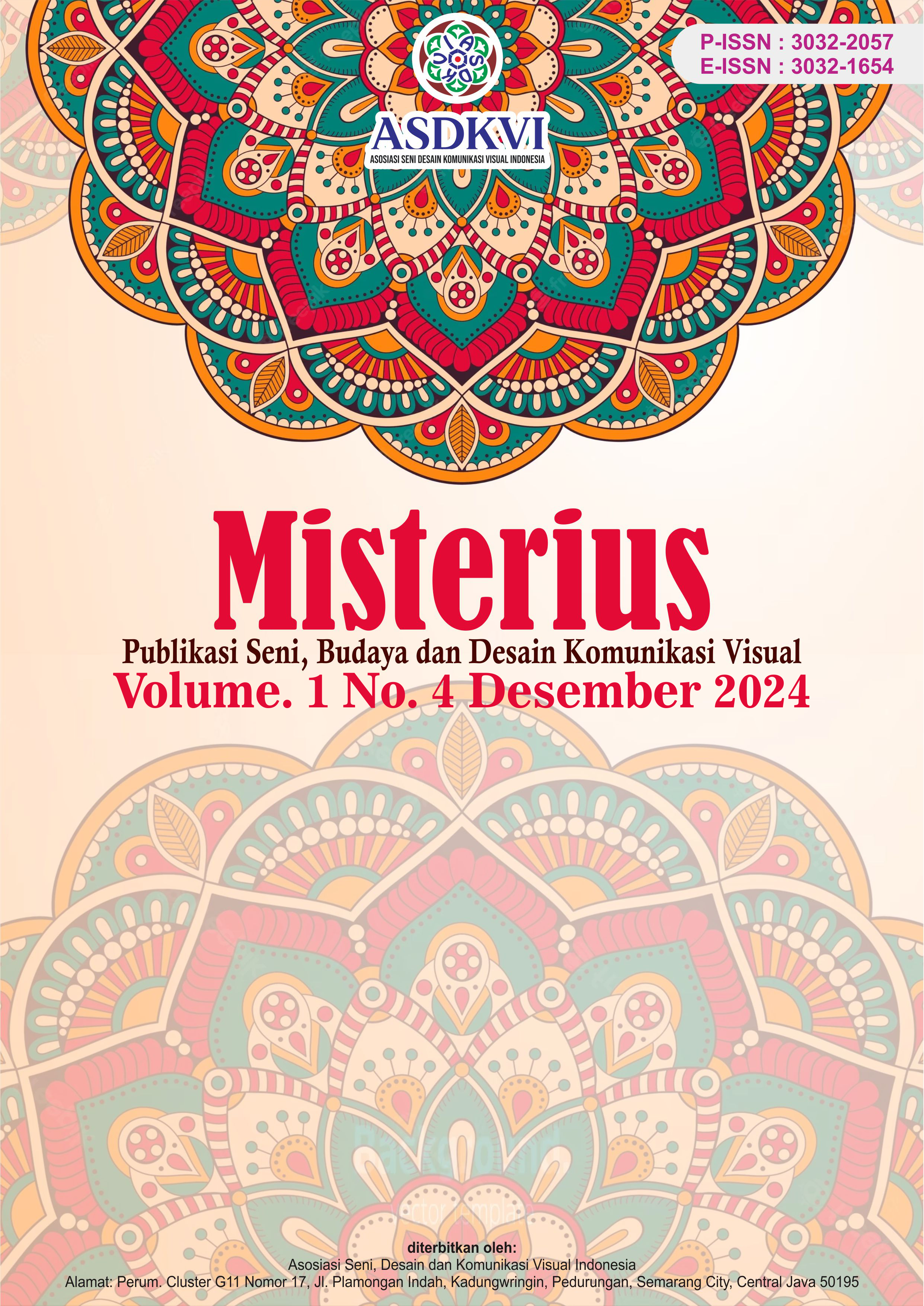Analisis Struktural Tari Sepen Penyok di Sanggar Kembang Kundor Desa Batu Penyu Kecamatan Gantung Kabupaten Belitung Timur
DOI:
https://doi.org/10.62383/misterius.v1i4.482Keywords:
analysis, structural, sepen penyok danceAbstract
This study aims to describe and analyze the movement structure of the Sepen Dentok Dance in the Kundor Flower Studio, Batu Penyu Village, Gantung District, East Belitung Regency. This research is a qualitative research. The object of the research is the Sepen Dentok Dance at the Kundor Flower Studio, Batu Penyu Village, Gantung District, East Belitung Regency. The types of data are primary data and secondary data. Supporting instruments used are stationery, and cameras. The steps of analyzing data are collecting data, describing the data and inferring the data. Data collection techniques are carried out through literature studies, observations, interviews, and documentation. The results of the study show that the relationship between the basic elements of the Sepen Penyok dance movement has basic elements related to the attitude and movement of the head, body, hands and feet. From the relationship system of the basic elements produce the forms of motifs. The hierarchical relationship system contained in the Sepen Penyok dance consists of 36 motifs, 15 phrases, 5 sentences, and 1 group. The Sepen Dentok Dance includes a syntagmatic relationship system, a relationship system that is like a link that cannot be separated or reversed between one and the other.
References
Asriati, A. (2000). Tari sebagai Ekspresi Budaya. Fakultas Bahasa dan Seni: Universitas Negeri Padang.
Asriati, A. (2005). Struktur Tari: Konsep dan Penerapannya pada Tari Tradisi. Universitas Negeri Padang.
Desfriani, D. (2004). Tari Lukah Gilo: Sebagai Rekaman Budaya Minangkabau Pra Islam: Dari Magis Ke Seni Pertunjukan Sekuler (pp. 1-169). Yogyakarta: Kalika.
Kemendikbud. (2023). Warisan Budaya Takbenda. Dapobud.Kemdikbud.Go.Id. https://dapobud.kemdikbud.go.id/wbtb
Martiara, R., & Astuti, B. (2018). Analisis Struktural Sebuah Metode Penelitian Tari. Yogyakarta: ISI Yogyakarta.
Moleong, L. J. (2014). Metode Penelitian Kualitatif (Edisi Revisi). Bandung: PT Remaja Rosdakarya.
Murgiyanto, S. (1983). Koreografi Pengetahuan Dasar Komposisi Tari. Jakarta: Proyek Pelita Departemen Pendidikan dan Kebudayaan.
Nerosti. (2019). Metafora Tari Dalam Pendidikan. Padang: SUKABINA Press.
Novile, S. N., Astuti, F., & Susmiarti, S. (2013). Analisis Struktur Gerak Tari Piriang Pijak Kaco di Daerah Lipek Pageh Nagari Sungai Nanam Kecamatan Lembah Gumanti Kabupaten Solok. Jurnal Sendratasik, 2(1), 1-6.
Ocktari, R. (2016). Tari Sepen di Sanggar Kembang Kundor Desa Batu Penyu Kabupaten Belitung Timur (Doctoral dissertation). Universitas Pendidikan Indonesia.
Prastya, A., Kurnita, T., & Fitri, A. (2017). Analisis Koreografi Tari Kreasi Jameun di Sanggar Rampoe Banda Aceh. Jurnal Ilmiah Mahasiswa Pendidikan Seni, Drama, Tari & Musik, 2(1).
Royce, A. P. (1980). Antropologi Tari (Terjemahan F. X. Widaryanto, 2007, First Midland Book Edition). Bandung: STSI Press Bandung.
Royce, A. P. (2007). Antropologi Tari. Bandung: STSI Press.
Soeharto, B. (1987). Menyiapkan Penelitian dan Penulisan Karya Ilmiah (Thesis, Edisi 1). Bandung: Tarsito.
Suharto, B. (1983). Tari Analisis Bentuk Gaya dan Isi Sebagai Penunjang Proses Kreatif (Makalah pada acara produksi bentuk budaya). Yogyakarta.
Downloads
Published
How to Cite
Issue
Section
License
Copyright (c) 2024 Misterius : Publikasi Ilmu Seni dan Desain Komunikasi Visual.

This work is licensed under a Creative Commons Attribution-ShareAlike 4.0 International License.





